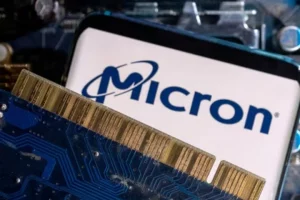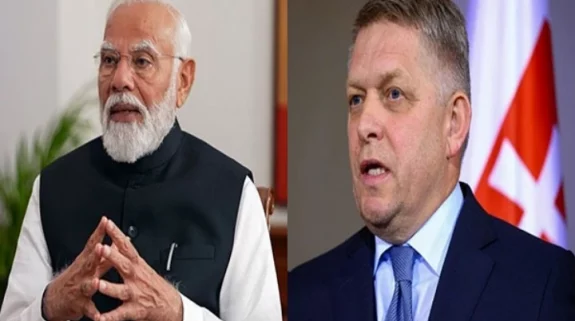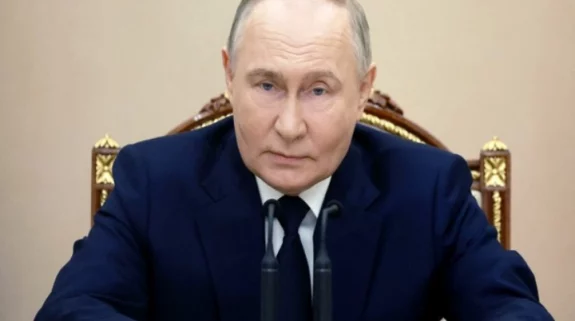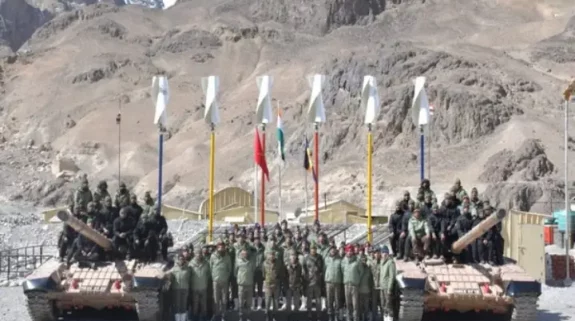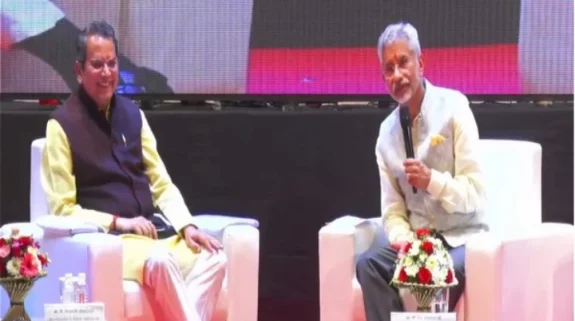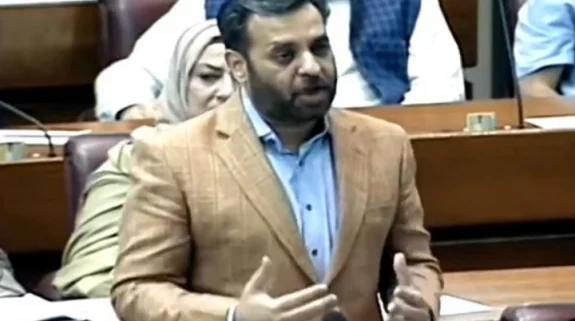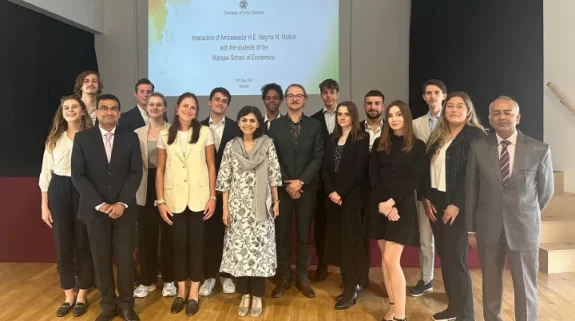From semiconductors to armed drones, India and the US have defined a roadmap for extensive collaboration in advanced technologies and military hardware during Prime Minister Narendra Modi’s visit to the United States.
A White House Fact Sheet has listed in detail the arena of partnership that will substantiate the strategic relationship between New Delhi and Washington in the decades to come.
Strengthening Semiconductor Supply Chains: Micron Technology, Inc. – with support from the India Semiconductor Mission – will invest more than $800 million toward a new $2.75 billion semiconductor assembly and test facility in India. Applied Materials has announced it will build a Semiconductor Centre for Commercialization and Innovation in India to further strengthen our nations’ semiconductor supply chain diversification. And, Lam Research will train 60,000 Indian engineers through its “Semiverse Solution” to accelerate India’s semiconductor education and workforce development goals. The U.S. Semiconductor Industry Association and India Electronics Semiconductor Association released an interim readiness assessment to identify near-term industry opportunities and facilitate the long-term strategic development of complementary semiconductor ecosystems.
Critical Minerals Partnership: The United States welcomes India as the newest partner of the Minerals Security Partnership (MSP), established to accelerate the development of diverse and sustainable critical energy minerals supply chains globally through targeted financial and diplomatic support of strategic projects along the value chain. India will join 12 other partner countries, plus the European Union, in advancing our common objectives of diversifying and securing our critical mineral supply chains. The MSP was started in June 2022 with the expressed goals of exchanging information on critical mineral sector opportunities to enable diversified private sector investment and catalyze public sector financing, while adhering to high environmental, social, and governance standards to advance sustainable economic development opportunities. India’s Epsilon Carbon Limited will be investing $650 million in a greenfield electric vehicle battery component factory, hiring over 500 employees over the course of five years. When approved, this synthetic graphite anode processing facility will be the largest Indian investment in the U.S. electric vehicle battery industry in American history.
Advanced Telecommunications: India and the United States launched public-private Joint Task Forces, one on the development and deployment of Open RAN systems and one on advanced telecoms research and development. India’s Bharat 6G and the U.S. Next G Alliance will co-lead this public-private research. This work will reduce costs, increase security, and improve resiliency of telecommunication networks. With financing from the U.S. International Development Finance Corporation, and in partnership with USAID, India and the United States are also teaming up to launch Open RAN deployments in both countries to demonstrate the scalability of this technology to enhance its competitiveness in international markets. The leaders also welcomed participation of Indian companies in the U.S. Rip and Replace Program.
New Frontiers in Space: India has signed the Artemis Accords, which advance a common vision of space exploration for the benefit of all humankind. India joins 26 other countries committed to peaceful, sustainable, and transparent cooperation that will enable exploration of the Moon, Mars, and beyond. NASA will provide advanced training to Indian Space Research Organization (ISRO) astronauts with the goal of launching a joint effort to the International Space Station in 2024. Additionally, NASA and the ISRO are developing a strategic framework for human spaceflight cooperation by the end of 2023. India approved a $318 million investment to construct a Laser Interferometer Gravitational-Wave Observatory in India—that will work in tandem with similar facilities in the United States, Europe, and Japan to look for ripples in space-time, known as gravitational waves, that provide insights into the physical origins of the universe. Scientific payloads for the NASA-ISRO Synthetic Aperture Radar (NISAR) have been delivered to India and will be launched in 2024, and will measure Earth’s changing ecosystems like natural hazards and sea level rise. The US Geological Survey and ISROare negotiating expanded bilateral data exchange that will enable greater insight about the earth, including for a range of applications, such as climate resiliency, sustainable development and management of natural resources, and disaster management support.
Quantum, Advanced Computing, and Artificial Intelligence: India and the United States have established a Joint Indo-U.S. Quantum Coordination Mechanism to facilitate joint research between the public and private sectors across both our countries. The United States also welcomed India’s participation in both the Quantum Entanglement Exchange and the Quantum Economic Development Consortium, which facilitates exchanges on quantum between nations. Additionally, India and the United States signed an implanting arrangement to further support joint research on quantum, Artificial Intelligence (AI), and advanced wireless technologies—building off of the U.S.-India Science and Technology Endowment Fund’s $2 million grant for the joint development and commercialization of Artificial Intelligence and quantum technologies. Through its AI Research Center in Bengaluru, Google is building models to support over 100 Indian languages, and working with the Indian Institute of Science to support open sourcing of speech data for AI models. It has also partnered with IIT Madras to establish a multidisciplinary Center for Responsible AI.
Cutting-edge Research: The U.S. National Science Foundation announced 35 joint research collaborations with the Indian Department of Science and Technology and also signed a new cooperative arrangement with the Indian Ministry of Electronics and Information Technology on emerging technologies. India’s Department of Atomic Energy (DAE) is making a $140 million in-kind contribution to the U.S. Department of Energy’s (DOE’s) Fermi National Laboratory toward collaborative development of the Proton Improvement Plan-II Accelerator, for the Long Baseline Neutrino Facility – the first and largest international research facility on U.S. soil.
Innovation Handshake: To support the U.S.-India Initiative on Critical and Emerging Technology (iCET), the U.S.-India Commercial Dialogue will launch a new “Innovation Handshake” to connect each country’s start-up ecosystems. This program will address regulatory hurdles to cooperation, promote job growth in emerging technologies, and highlight opportunities for hi-tech upskilling.
Fiber Optics Investments: India’s Sterlite Technologies Limited has invested $100 million in the construction of an optical fiber cable manufacturing unit near Columbia, South Carolina, which will facilitate $150 million in annual exports of optical fiber from India.
Next-Generation Defense Partnership:
GE F414 Engine Co-Production: The United States and India welcome a groundbreaking proposal by General Electric (GE) to jointly produce the F414 Jet Engine in India. GE and Hindustan Aeronautics Limited have signed a MoU, and a manufacturing license agreement has been submitted for Congressional Notification. This trailblazing initiative to manufacture F-414 engines in India—the first of its kind—will enable greater transfer of U.S. jet engine technology than ever before.
General Atomics MQ-9Bs: India intends to procure armed MQ-9B SeaGuardian UAVs. This advanced technology will increase India’s intelligence, surveillance, and reconnaissance capabilities.
New Sustainment and Ship Repair: The United States Navy has concluded a Master Ship Repair Agreement (MSRA) with Larsen and Toubro Shipyard in Kattupalli (Chennai) and is finalizing agreements with Mazagon Dock Limited (Mumbai) and Goa Shipyard (Goa). These agreements will allow mid-voyage U.S. Navy ships to undergo service and repair at Indian shipyards, facilitating cost-effective and time-saving sustainment activites for U.S. military operations across multiple theaters.
More Robust Defense Cooperation: The United States and India advanced steps to operationalize tools that will allow us to increase our defense cooperation. The United States and India resolved to strengthen undersea domain awareness cooperation. The agreement to place three Indian liaison officers in U.S. commands for the first time– deepening our partnership and critical information sharing. The United States and India have also commenced negotiations for a Security of Supply Arrangement and Reciprocal Defense Procurement Arrangement that will enable the supply of defense goods in the event of unanticipated supply chain disruptions. The United States and India finalized a Defense Industrial Cooperation Roadmap that provides policy direction to defense industries and enables co-production of advanced defense systems as well as collaborative research, testing, and prototyping of the technologies that will determine the future of military power.
Defense “Innovation Bridge”: The India-U.S. Defense Acceleration Ecosystem (INDUS-X)—a network of university, incubator, corporate, think tank, and private investment stakeholders—was inaugurated on June 21, 2023. This innovative program will facilitate joint innovation on defense technologies and accelerate the integration of India’s budding private sector defense industry with the U.S. defense sector.
Defense Industrial Cooperation Roadmap: A new defense industrial cooperation roadmap will provide policy direction to defense industries to enable and accelerate the co-production of advanced defense systems as well as collaborative research, testing, and prototyping of the technologies that will determine the future of military power.
Also Read: Why GE-HAL jet engine deal signed today will add wings to Indian aviation industry






